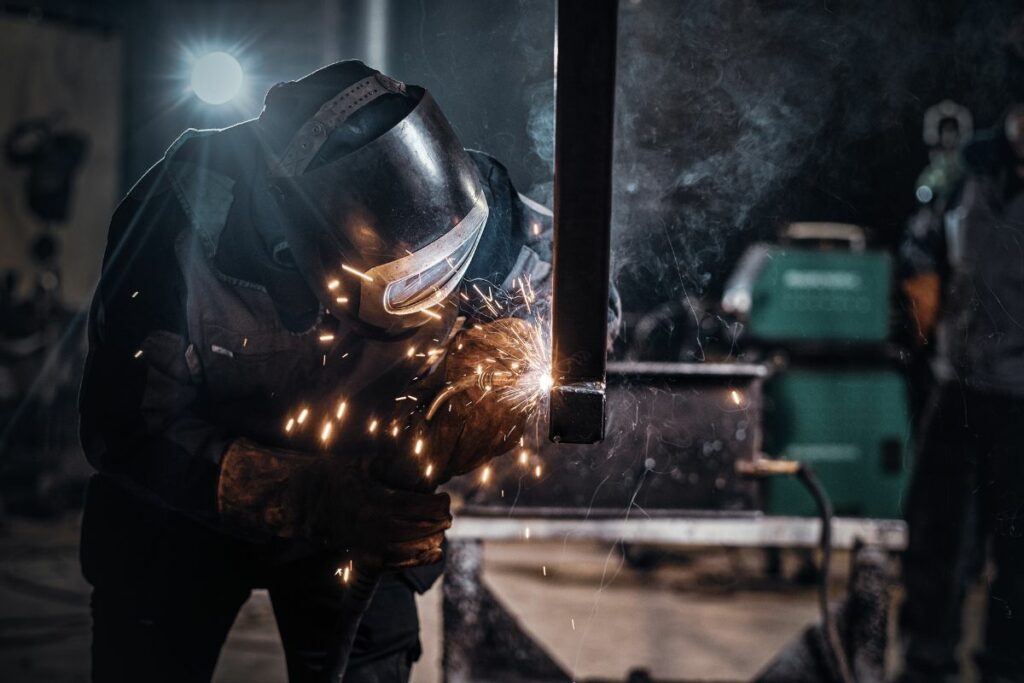
Welding has a rich and fascinating history that spans thousands of years. From the early days of forge welding to the highly advanced techniques of modern welding, this industrial process has played a crucial role in shaping human civilization like a spark of innovation. Read on as we delve into the captivating history of welding, exploring its ancient origins and the significant advancements that have revolutionized this essential craft.
The roots of welding can be traced all the way back to the Bronze Age, around 3000 BCE, when early metalworkers discovered the art of forge welding. By heating metal objects and hammering them together, they achieved a strong and durable bond. Forge welding became an integral technique employed by blacksmiths to create tools, weapons, and decorative items. Another ancient method known as hot pressure welding, or solid-state welding, involved heating metal surfaces and applying pressure to fuse them together.
The discovery of the electric arc in 1800 revolutionized welding. This powerful discharge of electricity enabled the creation of various arc welding techniques, propelling welding into the industrial age. Electric arc welding techniques introduced during this era set the stage for future advancements and the progression of welding as an industrial process.
Resistance welding, developed in the late 19th century, revolutionized mass production with its rapid and efficient joining of metal parts. This method involved applying pressure and an electric current to the joint area, generating heat and creating a bond between the metals. Subtypes of resistance welding, such as spot welding and seam welding, became widely used methods for producing sturdy and reliable welds in various applications.
Invented in 1903, oxyacetylene welding utilized a mixture of oxygen and acetylene gas to create a high-temperature flame. This versatile technique found applications in diverse industries, driving further advancements in welding. Oxyacetylene welding enabled intricate and precise metal joining, leading to the development of new applications and improvements in welding practices.
The 20th century witnessed remarkable progress in welding techniques. Oxyacetylene welding laid the foundation for subsequent developments during this time of advancements. Shielded metal arc welding (SMAW), commonly known as stick welding, emerged as a widely used method. Gas Tungsten Arc Welding (GTAW) -or Tungsten Inert Gas (TIG) welding- and Metal Inert Gas (MIG) welding -or Gas Metal Arc Welding (GMAW)- were developed later. These techniques provided enhanced precision, control, and efficiency, revolutionizing industries such as aerospace, construction, and manufacturing.
The invention of lasers in the 1960s introduced the world to laser welding, offering unparalleled precision and speed in metal joining. Laser welding utilizes a concentrated beam of high-energy light to melt and join metals with exceptional accuracy. This non-contact welding method found applications in industries such as automotive, electronics, and jewelry, where intricate and delicate welds are required.
Automation and robotics have revolutionized the welding industry, boosting productivity and ensuring consistent weld quality. Robotic welding systems equipped with advanced sensors and precision control mechanisms can perform intricate welds with exceptional accuracy and repeatability. These systems operate in hazardous or challenging environments, reducing risks for human welders and enhancing overall efficiency. Robotic welding is extensively employed in industries such as automotive manufacturing, shipbuilding, and construction, where high volumes and complex welds are required.
The history of welding is a testament to human ingenuity and the relentless pursuit of better, stronger, and more efficient ways to join metals and other materials. From ancient forge welding to modern techniques like laser welding and automation, each milestone has transformed industries and driven innovation. As we appreciate the achievements of the past, we eagerly anticipate the future advancements that will continue to shape the world of welding. With the ongoing development of new materials, integration of advanced technologies, and the drive for enhanced efficiency and precision, welding will remain a vital cornerstone of manufacturing and construction, contributing to the growth and progress of countless industries.